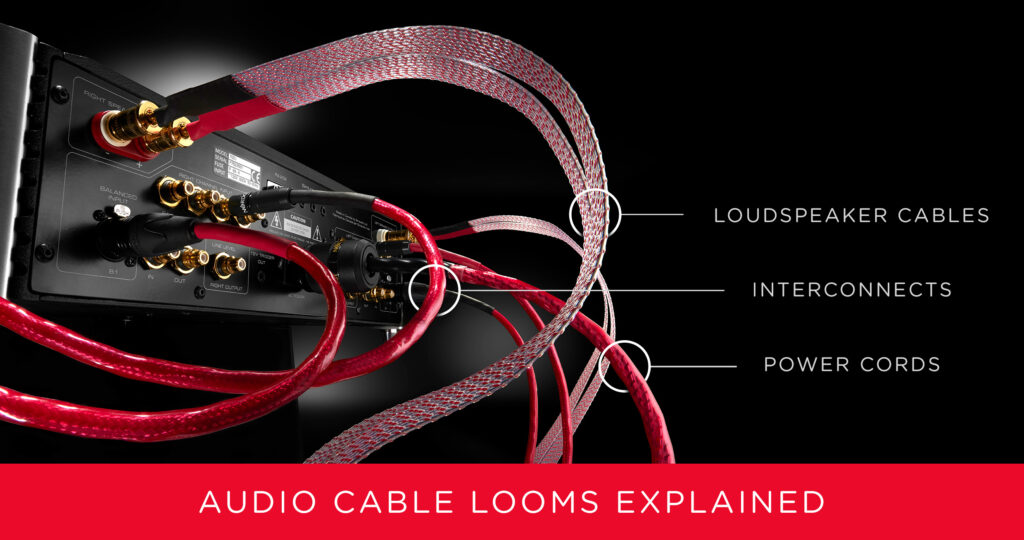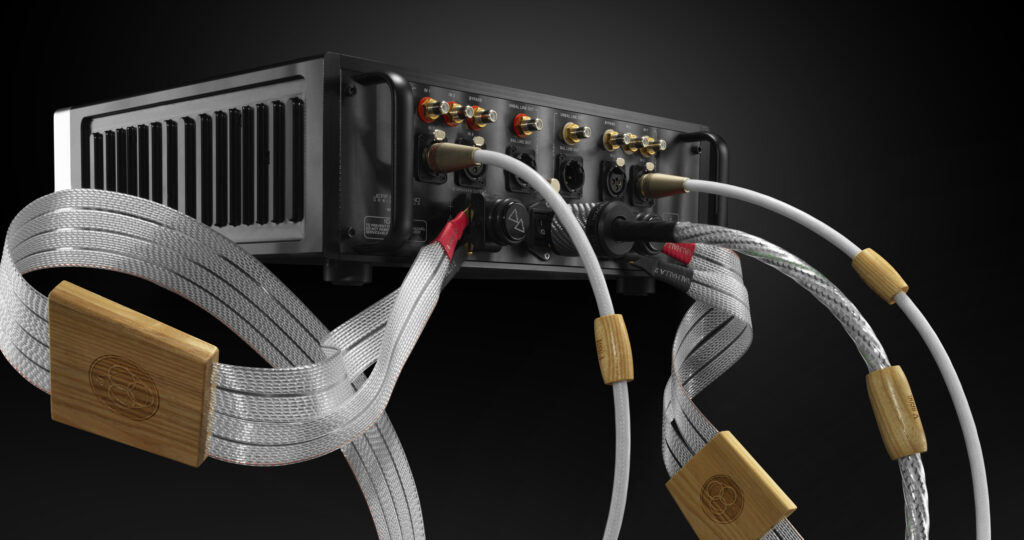
A “loom” of audio cables is a group of cables, constructed using the same technology and produced by the same manufacturer using a cohesive design philosophy. As a result of this design philosophy, cables produced by distinct manufacturers (and sometimes even ranges within each company) have their own sonic qualities, or “sonic signatures”. The sonic signature of each brand’s cables may be classified as brassy, light, bass-heavy, neutral etc.
Ultimately, it’s up to the listener to determine their own opinion on the merits of each cable’s sound. What is undeniable, however, is that the effect of mixing cable brands and their respective sonic signatures can have mixed results.

If you are lucky, the divergent characteristics of your cable hodge-podge will balance themselves out and you will be left with a pleasant-sounding system. Unfortunately, more often than not, the sonic signatures from different cable brands clash, leaving you unable to hear the composition of your system as it was intended. When that happens, you get to deal with the fun task of finding where that clash is happening through trial and error.
Besides not being able to find the cable that may be less desirable than others, mixing cable brands also makes it harder to identify the weak spots in your electronics themselves. Remember, some cable manufacturers use devices like filters to make up for deficits that may be caused by other components in your system. When listening to your system, you may find yourself wondering if the thin sound you’re hearing should be blamed on your speakers, or your speaker cables; is the slow timing the fault of your pre-amp or interconnects? Upgrading a hifi system can become unnecessarily frustrating and time-consuming when it is not clear which upgrades need to be made!
By using a uniform loom of cables you are no longer faced with these problems. There’s no need to “balance out” a system; weaknesses are easier to assess and fix, and your components are all on a level and comparable playing field. By hearing your music’s signal flow through a loom of cables, throughout your entire system, from the source all the way to your ears, you ensure that there are no competing or conflicting sonic properties influencing or changing the signal, allowing you to achieve a more coherent and realistic reproduction of sound.

Hi Nordost Team .
I am using the Tyr power cable as feeder in to the 20amp QB8 and use Qkore1 on it with premium earth .From the QB8 I use the Tyr to my Esoteric Streamer and Red dawn to my Plinius SA103 power amp and really made the system sound lush and sound absolutly great. Please note I am using Ecosse MS4.45 ( speaker cable) to the B&W 803D3 as Bi Wire config and Ecosse The Symphony( interconnect which I found to be very close to Tyr interconnect) .
However during my test a while ago tested over a period of a week testing the Nordost Tyr speaker cable and interconnects I have found that the Tyr Speaker cable was cutting the ultra high frequency and low frequency off and is as if Nordost speaker has high capacitance and inductance to act like a filter and gives a more “forward midrange performance”. The Nordost Tyr speaker cable and interconnect was not really better but only different to what I was able get out from the Ecosse combination and that for only $4500 .
Why is the Tyr speaker cable behaving like it does ?
Regards
Jaco
Please direct any specific questions to info@nordost.com for help